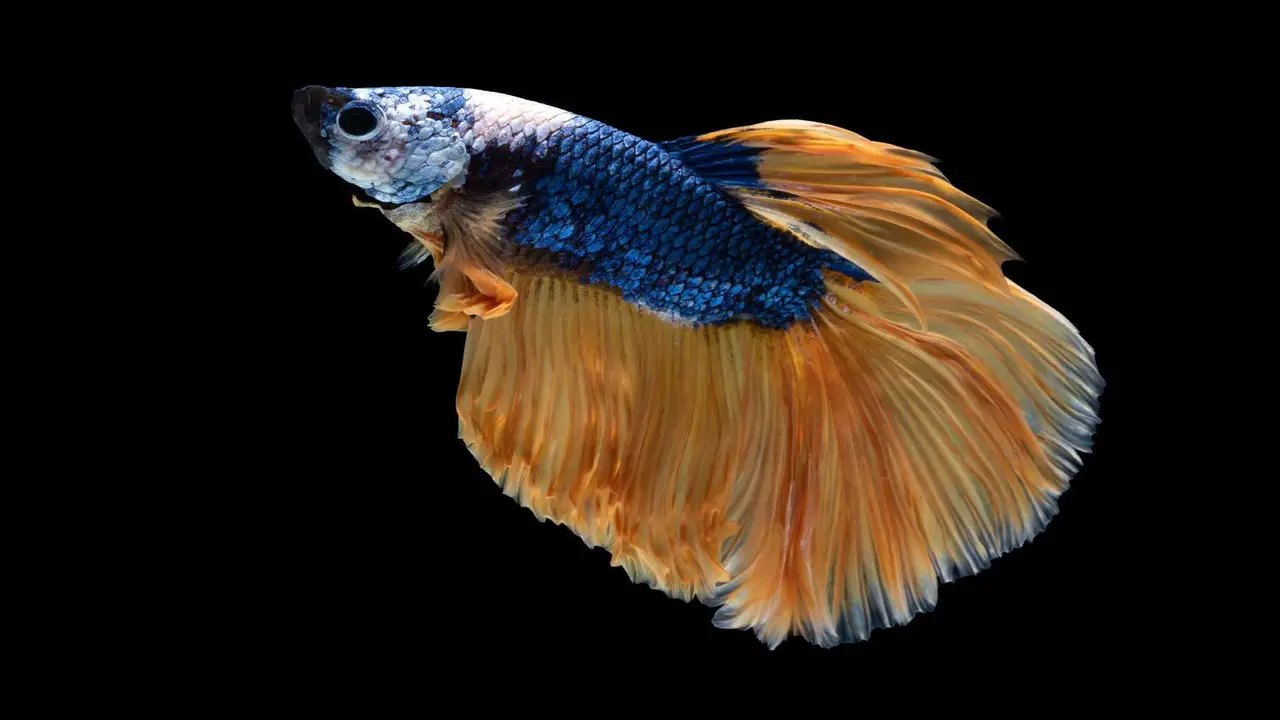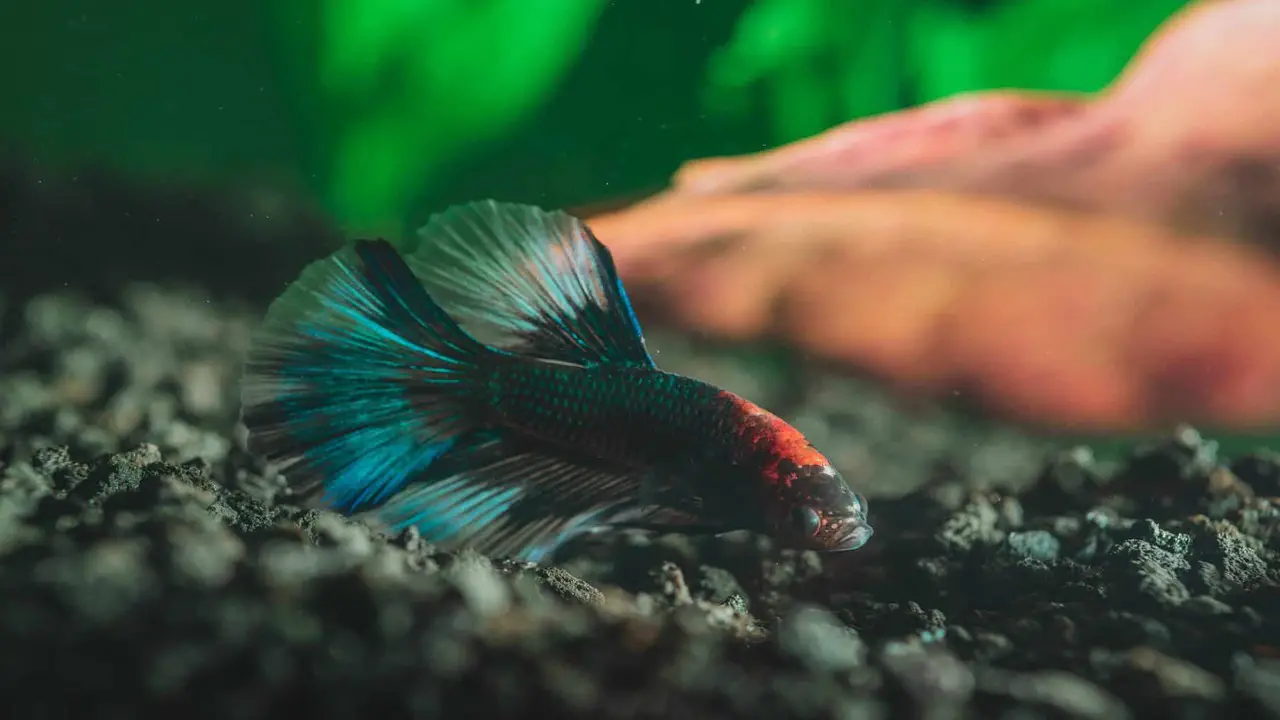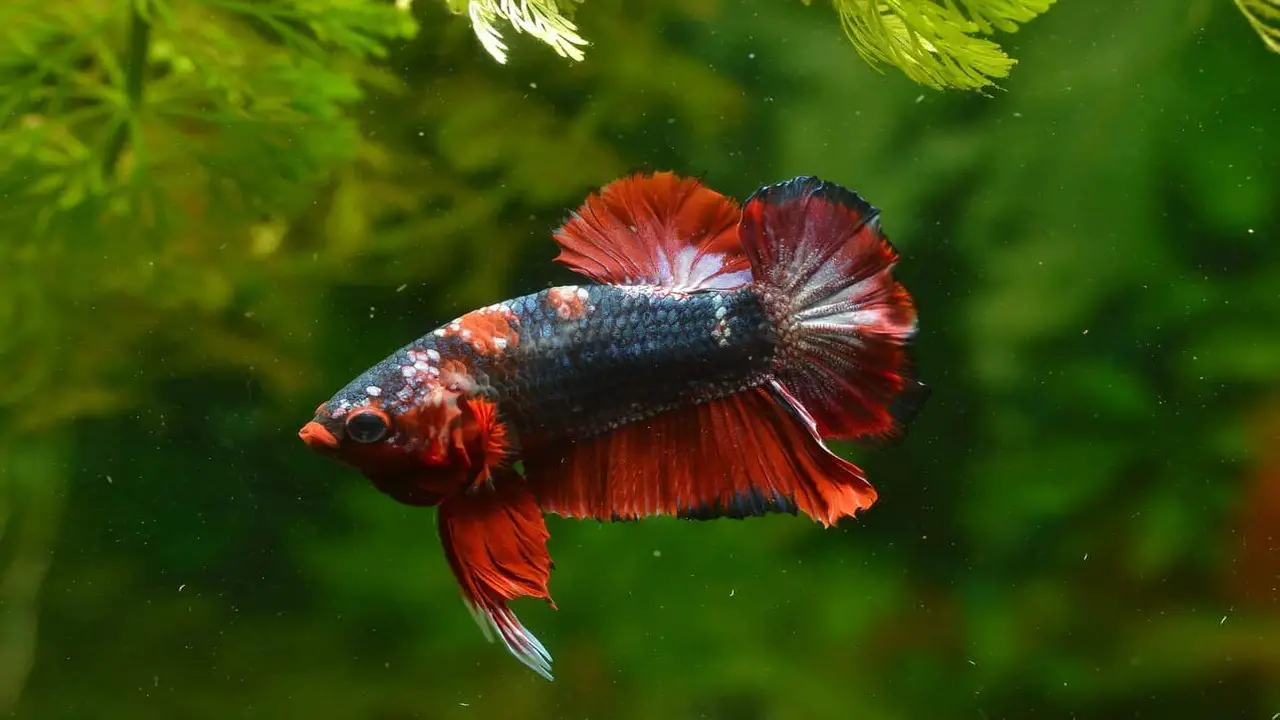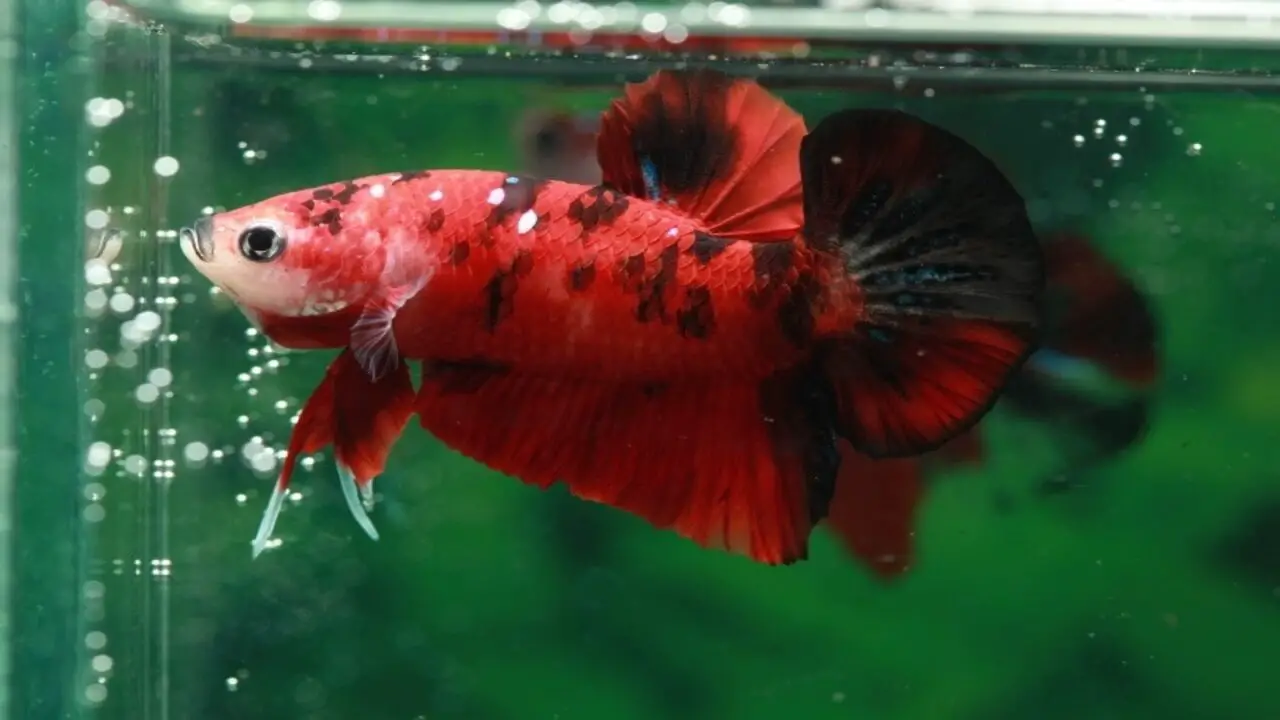Betta fish, also known as Siamese fighting fish, are popular pets due to their beautiful colours, unique personalities, and ease of care. However, like any other living organism, Bettas are susceptible to diseases and infections threatening their health and well-being.
One such disease is Columnaris, a bacterial infection that can be fatal if left untreated. Columnaris Betta Disease is a common affliction in Betta fish that can cause significant damage to their scales, fins, and internal organs, leading to a decline in their overall health and lifespan.
Symptoms of Columnaris Betta Disease include visible white or grey patches on the body and fins, loss of appetite, lethargy, and difficulty swimming. Here, we will discuss the symptoms and treatment of Columnaris Betta Disease and how to prevent its spread in your aquarium.

How To Identify And Treatment Columnaris Betta Disease

Columnaris betta, also known as cotton wool disease, is a common bacterial infection that affects betta fish. It is characterized by white or greyish patches on the fish’s body, fins, and mouth, which can resemble cotton wool. If left untreated, columnaris can be fatal for betta fish. To identify columnaris in your betta fish, look for the following symptoms:
- White or greyish patches on the body, fins, and mouth
- Frayed or ragged fins
- Difficulty breathing or gasping at the water surface
- Loss of appetite
If you suspect that your betta fish has columnar, it is important to take immediate action to prevent the infection from spreading. Here are some steps you can take to treat columnaris in your betta fish:
- Isolate the infected fish: Remove the infected betta from the main tank and place it in a separate quarantine tank. This will help prevent the spread of the infection to other fish.
- Increase water temperature: Columnaris thrive in cooler temperatures, so increasing the water temperature in the quarantine tank to around 80-82°F (26-28°C) can help slow down the progression of the infection.
- Use aquarium salt: Adding aquarium salt to the quarantine tank can help reduce stress and support your betta’s immune system. Follow the instructions on the salt package for proper dosage.
- Treat with antibiotics: In severe cases of columnaris, antibiotics may be necessary to eliminate the bacteria causing the infection. Consult with a veterinarian who specializes in aquatic animals for appropriate antibiotic treatment.
Remember to closely monitor your betta’s condition during treatment and provide clean, well-maintained water to promote healing.
What Is Columnaris Betta Disease, And How Does It Affect Betta Fish?
Columnaris Betta disease, also known as Columnaris or Cotton Wool Disease, is a bacterial infection that commonly affects betta fish. It is caused by the bacterium Flavobacterium columnare and can be highly contagious and deadly if left untreated. The disease manifests as white or greyish patches on the fish’s body, fins, or gills, resembling cotton wool.
Affected fish may also exhibit other symptoms such as loss of appetite, lethargy, rapid breathing, and fin rot. To treat Columnaris Betta disease, it is important to isolate the infected fish to prevent spreading the infection to other tank mates.
Treatment options include medicated baths, antibiotic medications, and maintaining optimal water conditions. Regular monitoring and preventive measures such as proper tank maintenance and stress reduction can help minimize the risk of this disease in betta fish. If you suspect your betta may have Columnaris Betta disease, it is recommended to consult with a veterinarian specializing in aquatic animals for a proper diagnosis and treatment plan.
How To Properly Diagnose Columnaris Betta Disease In Your Betta Fish
Close observation is crucial to diagnose Columnaris Betta disease in your betta fish properly. Look for external symptoms such as white or grey patches on the fish’s body and fins. Additionally, pay attention to internal symptoms like lethargy, loss of appetite, and rapid breathing. You can diagnose accurately by carefully monitoring your betta fish’s behaviour and physical appearance.
If you suspect your fish suffers from Columnaris Betta disease, treatment options include medicated baths, antibiotics, and improving water quality. Remember that early detection and prompt treatment enhance your betta fish’s chances of full recovery.
Treatment Options
For treating Columnaris Betta disease, several options are available. The first step is to improve water quality by performing regular water changes and ensuring proper filtration in the aquarium. This helps to create a clean and healthy environment for the fish.
In addition, antibiotics such as kanamycin, erythromycin, or tetracycline can be added to the fish’s water to help combat bacterial infection. Salt baths can also treat the disease in its early stages. It is crucial to isolate the infected fish in a quarantine tank to prevent the spread of the disease to other fish in the main tank.
Medications And Aquarium Treatments

When treating Columnaris Betta disease, several medications and aquarium treatments can be used. Antibiotics such as kanamycin and erythromycin have been found to be effective in combating this disease in bettas. Additionally, aquarium salt and malachite green can also be used as treatments.
It is important to properly dose these medications and carefully follow the instructions for effective treatment. To prevent the spread of the disease to other fish in the tank, it is recommended to quarantine infected bettas. Regular water changes and proper tank maintenance can also help prevent the incidence of Columnaris disease.
Preventative Measures To Avoid The Spread
To prevent the spread of Columnaris Betta disease, it is important to take preventative measures. Proper tank maintenance plays a crucial role in preventing the disease. Regular water changes help maintain good water quality and reduce the risk of infection. Another important measure is to avoid overcrowding in the tank, as this can lead to stress and weakened immune systems in the fish.
Quarantining new fish before introducing them to the tank helps prevent the introduction of diseases. Keeping fish healthy with a balanced diet and regular check-ups by a veterinarian is also essential. Early detection and treatment are key in preventing the spread of Columnaris Betta disease.
Steps To Take If You Suspect Your Betta Fish Has Columnaris Betta Disease

If you suspect your betta fish has a columnar, it is important to take immediate action to prevent the spread of the disease and provide proper treatment for your fish. Here are some steps to take if you suspect your betta fish has columnaris:
- Quarantine your betta: If you have other fish in the tank, isolate the infected betta in a separate quarantine tank to prevent the spread of the infection.
- Observe and assess symptoms: Look for signs of columnaris, such as white or grey patches on the skin, frayed fins, or difficulty breathing. It is important to confirm the diagnosis before starting treatment.
- Adjust water conditions: Columnaris thrives in poor water conditions, so ensure your aquarium water is clean and properly maintained. Regularly test and adjust water parameters such as temperature, pH, and ammonia levels.
- Treat with medication: Various medications are specifically designed to treat columnaris in betta fish. Follow the instructions provided by the manufacturer and consult with a veterinarian if necessary.
- Maintain proper hygiene: Clean and disinfect any equipment used in the infected tank to prevent reinfection. Wash your hands thoroughly after handling your betta fish or any aquarium-related tasks.
Remember, early detection and prompt treatment are crucial in combating columnaris in betta fish. If you have any concerns or are unsure how to proceed, it is always best to seek advice from a knowledgeable aquarist or veterinarian.
Proper Care And Maintenance Tips To Prevent The Occurrence
Maintaining a clean and healthy tank environment prevents Columnaris Betta disease. By ensuring proper water quality and cleanliness, you can create an unfavourable environment for the growth of columnar bacteria. Regular water changes and effective filtration systems play an important role in removing harmful substances and maintaining optimal conditions for your betta fish.
Additionally, it is essential to be vigilant and identify early disease symptoms such as lethargy, loss of appetite, and frayed fins. Early detection allows prompt treatment with antibiotics like sulfonamides and nitrofurazone, which effectively combat bacterial infection.
Isolating infected fish in a separate quarantine tank also prevents the spread of the disease to other fish. By implementing these care and maintenance tips, you can significantly reduce the risk of Columnaris Betta disease and create a healthy and thriving environment for your betta fish.
Importance Of Water Quality And Cleanliness In Preventing Columnaris Betta Disease

Water quality and cleanliness are of utmost importance when it comes to keeping a columnaris betta healthy. Columnaris is a bacterial infection that often affects bettas, causing symptoms such as white patches or cotton-like growth on the fish’s body. One of the main factors that can contribute to the development of this infection is poor water quality. To prevent columnaris in bettas, it is crucial to maintain a clean and well-maintained aquarium environment.
This includes regular water changes, proper filtration, and monitoring of water parameters such as pH and ammonia levels. Additionally, providing a stress-free environment with adequate hiding places can also help boost the betta’s immune system and reduce the chances of infection. By prioritizing water quality and cleanliness, betta owners can greatly reduce the risk of columnaris and ensure their fish remains healthy and vibrant.
Conclusion
Early detection and proper treatment are crucial in managing Columnaris Betta disease. Regularly monitor your betta fish for signs of illness, such as white patches, frayed fins, or lethargy. If you suspect your betta fish has Columnaris Betta disease, promptly isolate it from other fish and provide the appropriate treatment.
Medications and aquarium treatments can help eliminate the bacteria causing the disease. Also, maintain good water quality and cleanliness in your betta fish tank to prevent Columnaris Betta disease. By following these steps and providing the necessary care, you can ensure the health and well-being of your betta fish.
Frequently Asked Questions
How Do I Know If My Fish Has Columnar?
Symptoms of columnaris in fish include white or grey patches on the body, frayed fins, and lethargy. Other signs may include difficulty breathing, loss of appetite, and a sunken belly. Isolate infected fish to prevent the spread and consider treatment options such as antibiotics, salt baths, and improving water quality.
What Are The Clinical Signs Of Columnaris Disease?
Clinical signs of columnaris disease can vary depending on the stage of infection. Look out for white or greyish patches on the body and fins, frayed fins, lethargy, loss of appetite, and difficulty breathing. Severe cases may lead to ulcers and systemic infections. Early diagnosis and antibiotic treatment are crucial.
What Is The Mortality Rate Of Columnar?
The mortality rate of columnaris can vary depending on the infection’s severity and the fish’s health. It can be as high as 50% or more in severe cases. Early detection and treatment greatly improve survival chances. Regular water changes and proper aquarium maintenance help prevent columnaris infections.
What Are The Symptoms Of Columnaris In Bettas?
Symptoms of Columnaris in bettas include white or grey patches on the skin, frayed fins, lethargy, difficulty swimming, loss of appetite, and rapid breathing. Early detection is crucial for successful treatment. Consult a veterinarian for proper diagnosis and treatment options.
How Long Can A Fish Live With Columnaris?
The lifespan of a fish affected by Columnaris can vary based on the severity of the infection and the treatment given. In severe cases, fish may die within 24 to 48 hours of showing initial symptoms. However, with proper treatment, some fish can recover from Columnaris within a week or two. Regular monitoring of fish behaviour and health is crucial for early detection.

Aquarium passion is all about connecting with the aquatic life and providing education to the public on the importance of these creatures. We showcase a wide variety of marine life through our exhibits as well as working with schools to provide unique learning opportunities for students of all ages.





